Significance
Importance To Berry Global and our Stakeholders
Sustainable product innovation drives our competitive advantage by addressing evolving consumer preferences, market demands, and regulatory requirements. By focusing on responsible material sourcing and circular design principles, we deliver packaging solutions that optimize environmental and social performance while ensuring regulatory compliance.
Our commitment to sustainable design extends beyond environmental benefits, generating significant business value through improved cost efficiency, reduced exposure to resource scarcity, adaptability to regulatory shifts, and enhanced market resilience—all contributing to our long-term business viability.
Our Customer Impact: Our innovations catalyze customer growth while supporting their sustainability ambitions through responsibly sourced materials and circular design principles. This integrated approach helps customers achieve sustainability targets, navigate regulatory complexities, and align with increasingly environmentally conscious consumers.
Investor Benefits: Innovation fuels our organic growth strategy, directly creating shareholder value. By developing products that anticipate and exceed regulatory requirements, we protect long-term shareholder interests while strengthening Berry's market reputation as a forward-thinking industry leader.
Our Approach
At Berry, sustainable product innovation drives our approach to packaging solutions. By focusing on responsible material sourcing and end-of-life design with an eye to circularity, we create competitive products that meet environmental and regulatory standards while supporting our customers’ business objectives and sustainability goals. Our design practices improve cost efficiency and mitigate business risks while generating shareholder value by staying ahead of market shifts and consumer expectations. By developing responsible, recyclable products, we address the needs of our customers, investors, and other stakeholders.
Berry is committed to continuous improvement and innovation with our products through strategic research, development, and technology investments. Our approach focuses on advancing sustainability across multiple dimensions, including increasing post-consumer recycled (PCR) content in fast-moving consumer goods packaging; developing packaging solutions that are reuseable, recyclable, or compostable; and improving the sustainability of our non-plastic raw materials. Additionally, we are dedicated to incrementally lightweighting our product portfolio, targeting an estimated average reduction of 1% year-over-year, which will contribute to reducing material consumption and environmental impact.
Highlights and Target progress
| Priority | 2024 Update |
| 100% reusable, recyclable, or compostable packaging by 2025 |
A total of 85% of our product portfolio is reusable, recyclable, or compostable, and 93% or our portfolio is recyclable or has replacement validated recyclable solutions available. |
| Reduce product weight | Estimated 1% annual product weight reduction achieved |
| Reach 30% circular plastics across FMCG packaging by 2030. | Circular Plastics make up 11.0% of total resin usage, up from 9.7% in 2023. |
| Achieve 10% post-consumer recycled content across our FMCG packaging by 2025 | Post-consumer recycled resin (PCR) makes up 5.1% of total resin purchases, up from 3.6% in 2023. |
Key Metrics
The below metrics are based on Berry's Fiscal Years unless otherwise noted.
|
Portfolio Management |
|||
|
|
2022 | 2023 | 2024 |
| Patents | Number | ||
| Issued Patents | 243 | 296 | 307 |
| Production Volume | Million (MT) | ||
| Volume | 3.9 | 3.6 | 3.5 |
| Production Material Type | Percentage of production revenue | ||
| Plastics | 100% | 100% | 100% |
| Paper / Wood | <1% | <1% | <1% |
| Glass | 0% | 0% | 0% |
| Metal | <1% | <1% | <1% |
|
Material Sourcing |
|||
|
|
2022 | 2023 | 2024 |
| Resin Purchasing | Percentage of total resin purchases |
||
| Asia | 3% | 4% | 4% |
| Europe, Middle East, India, and Africa (EMEIA) | 34% | 35% | 34% |
| North America | 57% | 54% | 54% |
| South America | 5% | 7% | 8% |
| Circular Resin Sourcing |
Percentage of total resin purchases | ||
| Total post-consumer recycled resin (PCR) purchased | 3.40% | 3.60% | 5.10% |
| Externally reprocessed PCR | 2.70% | 2.90% | 3.70% |
| Internally reprocessed PCR | 0.70% | 0.70% | 1.40% |
| Total post-industrial recycled resin (PIR) purchased | 1.10% | 1.20% | 0.40% |
| Externally reprocessed PCR | 0.20% | 0.20% | 0.20% |
| Internally reprocessed PCR | 1.00% | 1.00% | 0.20% |
| Total Recycled Resin (PCR & PIR) purchased | 4.60% | 4.80% | 5.50% |
| Total Bioplastics (Renewable) purchased | 0.40% | 0.60% | 1.50% |
| Total Circular Plastics purchased | 4.90% | 5.40% | 6.90% |
| Percentage of Total Volume of Resin Consumed | |||
| Internal Reprocessed Scrap (PIR)¹ Consumed |
4.50% | 4.60% | 4.30% |
| Total Recycled Resin (PCR & PIR) Consumed | 8.80% | 9.10% | 9.10% |
| Total Circular Plastics Consumed | 9.20% | 9.70% | 11.00% |
| Sustainable Material Sourcing | Percentage | ||
| Percentage of Wood Fibre purchases Sustainable Forestry Initiative® (SFI) Certified² | 99% |
99% | >99% |
| Percentage of Aluminum purchases Aluminum Stewardship Initiative (ASI) Certified² | 19% | 18% | 4% |
| Chain of Custody Certifications | Number | ||
| ISCC+ | 67 | 64 | 62 |
| EUCertPlast | 2 | 2 | 3 |
|
Optimizing Design |
|||
|
|
2022 | 2023 | 2024 |
| Product End-of-Life | Percentage of total Fast-moving consumer goods (FMCG) Packaging by Volume | ||
| Reusable | <1% | <1% | 1% |
| Recyclable | 85% | 87% | 85% |
| Compostable | <1% | <1% | <1% |
| Percentage of total Fast-moving consumer goods (FMCG) Packaging by Sales | |||
| Reusable | <1% | <1% | 1% |
| Recyclable | 80% | 83% | 82% |
| Compostable | <1% | <1% | <1% |
¹ Reprocessed Scrap is considered as PIR, but we have separated this out from our purchased PIR metrics. This metric includes scrap significantly reprocessed on separate lines, transferred for reprocessing at different facilities within Berry, or sent to a non-Berry business for conversion and then brought back to Berry for internal use. For this metric, the percentage listed is percentage of both total resin purchased and reprocessed.
² Includes only material sourced for use in our products.
Key Strategies
Portfolio Management

In 2024, we were issued 307 new patents, bringing the total issued to Berry worldwide since 2019 to over 1,700.
Our world-class R&D experts focus on solutions that meet our sustainability commitments as fast as possible, and through a global network of people, partners, processes, and leading technological investments, we are able to take hypotheses through to breakthrough solutions faster than ever for our customers. Our design and innovation centers across the globe supporting the development of innovative solutions for both existing and new applications.
Circular Resin Sourcing

In 2024, we increased the amount of post-consumer recycled (PCR) and total circular resin purchased across our business by both volume and percentage of total purchased resin. PCR now makes up 5.1% of our overall resin purchases, up from 3.6% in 2023, and 2.2% in 2019. Circular resin purchases are up from 5.4% in 2023 to 6.8% in 2024. We also track our use of internal, post-industrial recycled (PIR) resin from the significant reprocessing of scrap. When accounting for this, our total circular resin usage across the business is 11%, up from 9.7% in 2023.
See how the strides we’re making to improve the use of recycled content extend across our stock portfolio and customer collaborations here
In some cases, we can replace the fossil fuel feedstocks in products with renewable resources, like used cooking oils, forestry residue, sugar cane, and more. See more examples of our use of renewable resins here.
Circular Material Sourcing
In addition to our resin sourcing commitments, we are working to incorporate more sustainable non-plastic raw materials into our products, such as the use of fiber pulp and Aluminum foil.
Of all the wood fiber used in our products in 2024, over 99% has been certified by the Sustainable Forestry Initiative® for sustainable forest management practices, and 4% of the Aluminum sourced for our products was certified by the Aluminum Stewardship Initiative.
ISCC Plus Certification
We have been actively pursuing International Sustainability and Carbon Certification (ISCC) PLUS certifications across Berry facilities. ISCC PLUS certification allows us to bring in-demand, certified circular products to market, presenting our customers with options for advanced recycled materials on a mass-balance basis to meet their sustainability goals. Information on our approach to sourcing raw material responsibly and conducting business with suppliers who share our commitment to an ethical and sustainable value chain can be found on the Building Responsible Supply Chains page.
At the end of 2024, we had 62 facilities that are ISCC PLUS certified, including all North American rigid plastic foodservice manufacturing locations.
Optimizing Design: Reusable, Recyclable and Compostable Products

We are focused on using product design to extend the lifecycle of our products, minimize waste, and divert them from disposal methods such as landfill or incineration. Throughout 2024, we continued to collaborate with our customers to identify and align key product lines that advance the circular economy by developing reusable, recyclable, and/or compostable alternatives to problematic or unnecessary packaging. Our primary means of improving product circularity is through material substitution to widely recyclable plastics, focusing on mono-material design, and eliminating problematic design features. In addition, we continue to work to drive demand for recycled plastic through our material sourcing strategy.
In 2024, 85% of our products were designed for recycling, slightly down from 87% in 2023. We continue to work across our divisions to eliminate non-recyclable packaging, such as colored PET, black packaging using carbon black as a colorant, and multi-material composites. In calculating our designed for recycling percentage, we used the guidelines outlined by the Association of Plastic Recyclers (APR) and RecyClass for the appropriate regions. For RecyClass, we only considered packaging that scored a rating of A-C as designed for recycling.
In addition to our current, recyclable packaging sales, we also have validated recyclable solutions that could be used in place of 8% of our non-recyclable packaging. We are currently working with customers to convert from their current, non-recyclable packaging to these validated, recyclable solutions. Discover how our efforts to improve the recyclability of our products are making an impact.
We also increased our year-on-year volume of reusable packaging sales, though reusable and compostable solutions still represent a relatively small portion of our portfolio. Explore the reusable circular solutions we offer to our customers.
With the desire for recyclable packaging continually growing among customers, we expect to make continued progress toward our goal of 100% reusable, recyclable, or compostable fast-moving consumer packaging over the next 12 months.
Optimizing Design: Lightweighting
In addition to reducing the raw material requirements of our products, product lightweighting remains one of the most straightforward and effective ways to reduce lifecycle impacts across every impact category. These impact reductions are consistently confirmed by lifecycle assessments (LCAs) we perform on our products using third-party LCA software. Lightweighting is conducted across Berry without compromising the product’s quality or function and is enabled by enhanced product design and material science.
In 2024 we continued our long-term efforts and lightweighted our overall product portfolio by an estimated average of 1% reduction. See examples of the progress we’ve made to offer more lightweight products to our customers.
Disclosures
Contribution to the Sustainable Development Goals (SDGs)
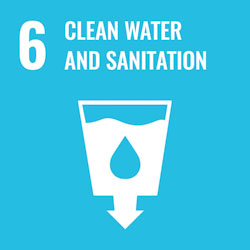
We promote responsible end-of-life for our products through responsible material sourcing and sustainable design practices that help eliminate plastic pollution in water bodies, preserve water quality, and maintain high sanitation standards.
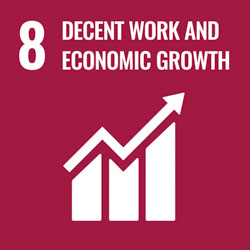
We create a positive impact on society and the economy through responsible production practices. By continuously striving to improve resource efficiency and sustainable sourcing, we help achieve economic growth across our business that is in-line with a net-zero and circular economy.
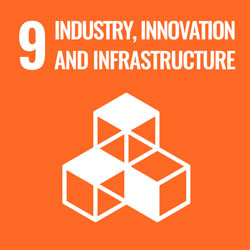
We embrace sustainable sourcing and manufacturing practices that help foster innovation and drive the development of new sustainable products by investing in infrastructure and leveraging our global R&D capabilities.
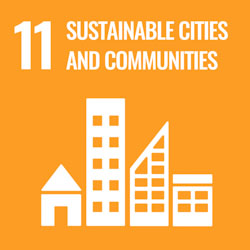
Designing products with sustainable end-of-life considerations significantly reduces waste generation within urban environments. Additionally, responsible sourcing eases pressure on infrastructure. We increase the sustainability of communities by working towards a circular economy
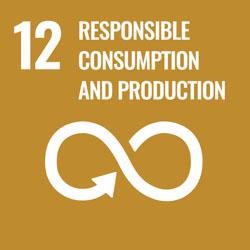
The use of recycled or bio-based plastic reduces the demand for virgin fossil fuels and mitigates the negative effects of resource depletion. By designing for recycling and reuse we help close the loop on plastic waste, further preserving natural resources and reducing the burden on waste systems.

By using recycled content and designing lighter-weight products, we help mitigate greenhouse gas emissions produced during the lifecycle of our products, reducing emissions across the plastics supply chain, and contributing to climate action.
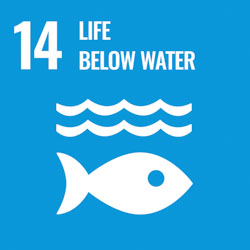
We are committed to designing circular products with responsible end-of-life scenarios, including reuse and recycling, to help diminish marine plastic pollution and safeguard marine ecosystems.

Sustainable product innovation helps minimize the amount of waste mismanaged or sent to landfill, reducing plastic pollution and the degradation of vital habitats and ecosystems. By designing for reuse and recycling, we deliver innovative solutions for our customers that help mitigate our impact to life on land.

Building partnerships for sustainable production innovation between consumers, brands, and suppliers is crucial for achieving the SDGs. Such partnerships allow us to drive sustainable material sourcing and encourage responsible production and consumption practices.
GRI and SASB Alignment
GRI 301(3-3) Management of MaterialsGRI 301-1 Materials Used by Weight or Volume
GRI 301-2 Recycled Input Materials Used
SASB RT-CP-410a.1 Percentage of Raw Materials From: (1) Recycled Content (2) Renewable Resources (3) Renewable and Recycled Content
SASB RT-CP-410a.2 Revenue from Products that are Reusable, Recyclable, and/or Compostable
SASB RT-CP-410a.3 Discussion of Strategies to Reduce the Environmental Impact of Packaging Throughout its Lifecycle
SASB RT-CP-430a.1 Total Wood Fiber Procured, Percentage from Certified Sources
SASB RT-CP-430a.2 Total Aluminum Purchased, Percentage from Certified Sources
SASB RT-CP-000.A Amount of Production, by Substrate
SASB RT-CP-000.B Percentage of Production as: (1) Paper/Wood (2) Glass (3) Metal (4) Plastic
Last Updated: March 17, 2025